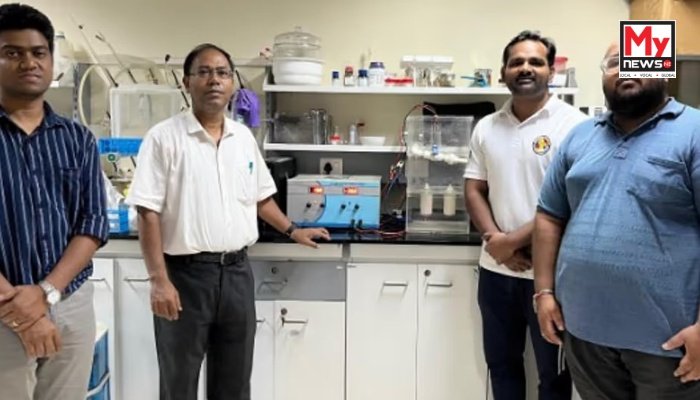IIT Guwahati Scientists Develop Low-Cost Water Purifier to Combat Fluoride Contamination
Guwahati:In a significant breakthrough for public health, scientists at the Indian Institute of Technology (IIT) Guwahati have developed an innovative and cost-effective water purification system aimed at tackling fluoride contamination—a major issue in several Indian states. The system treats up to 20,000 litres of groundwater per day at a remarkably low cost of just ₹20 per 1,000 litres.
The project, led by Professor Mihir Kumar Purkait from the Department of Chemical Engineering, offers new hope to millions affected by skeletal fluorosis, a painful condition caused by high fluoride levels in drinking water. The condition is particularly widespread in regions like Rajasthan, Telangana, Andhra Pradesh, Karnataka, Haryana, and Gujarat.
The technology, recently featured in the ACS ES&T Water journal, has shown impressive results—removing 94% of iron and 89% of fluoride, thereby bringing contaminated water within Indian safety standards.
Four-Step Treatment Process
The system uses a compact and energy-efficient four-stage purification process:
1. Aeration: A specialised aerator oxygenates the water, oxidising and removing dissolved iron.
2. Electrocoagulation: A mild electric current passes through aluminium electrodes, releasing charged metal ions that bind to contaminants.
3. Flocculation and Settling: Contaminants clump together and settle in a chamber.
4. Multi-layer Filtration: Coal, sand, and gravel layers filter out remaining impurities.
“The coagulants formed through electrocoagulation help in aggregating and removing both suspended and dissolved impurities,” explained Prof. Purkait.
Affordable, Durable, and Low Maintenance
Designed to last 15 years, the unit requires only biannual electrode replacements and minimal supervision, making it ideal for rural and remote regions. A pilot installation in Changsari, Assam, in partnership with the Public Health Engineering Department and Kakati Engineering Private Limited, has already proven its field viability.
The team—Dr Anweshan, Dr Piyal Mondal, and research scholar Mukesh Bharti—is also exploring renewable energy options, such as solar and wind power, and even plans to utilise hydrogen gas generated during the treatment process. Further upgrades will integrate smart sensors and automated controls, creating a decentralised and self-sustaining solution for underserved communities.
As India continues to face challenges in ensuring safe drinking water, especially in fluoride-affected areas, this homegrown technology stands out for its effectiveness, simplicity, and affordability—a potential game-changer in public water health management.
Read More: AAMSU Stages Sit-in Protest Against Evictions in Kokrajhar, Submits Memorandum to CM

